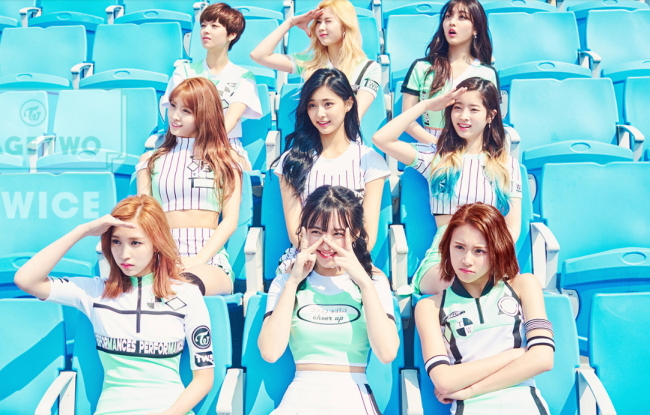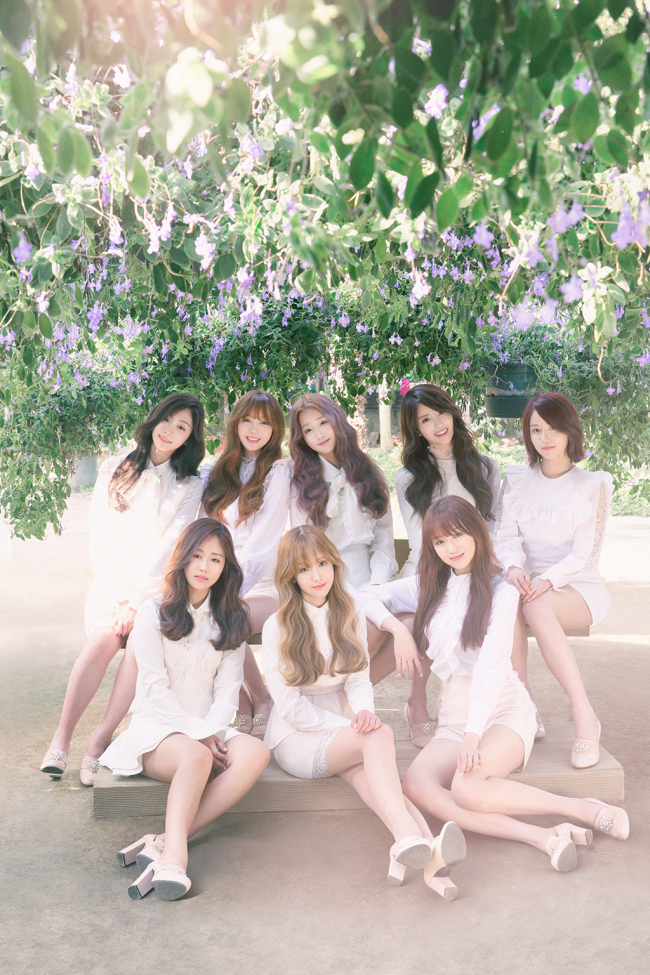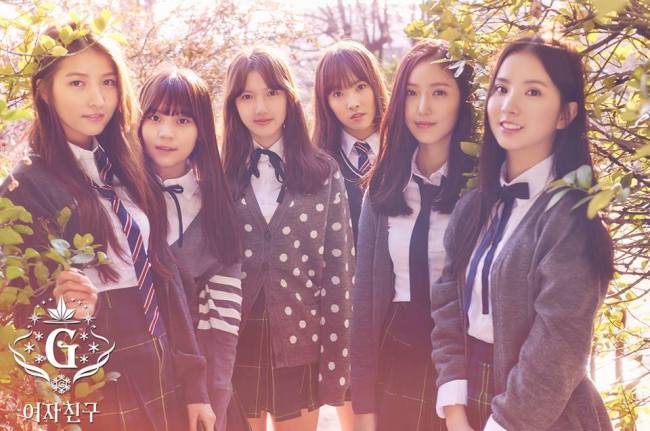[Hallyu Power] New generation of K-pop girl groups
Out with the old, in with the new -- a third wave of girl groups has taken over, spreading globally
By KH디지털2Published : May 26, 2016 - 14:25
A new era is dawning in the K-pop girl group scene.
Groups like Wonder Girls and 2NE1 that set in motion Korean pop music’s global expansion are now more or less inactive, while a new cluster of female teams that debuted after 2010 -- AOA, EXID and GFriend, to name a few -- are taking center stage in K-pop locally and abroad.
These new groups are making their debuts in different forms and benefiting from the wide reach of social media.
Among the fresh burst of girl groups enjoying success is I.O.I, which consists of 11 members selected through audience votes in the audition program “Produce 101.”
According to reports, the group is in high demand at festivals, events and on TV shows. In just two weeks since its May debut, I.O.I has inked some 10 ad endorsement deals.
Groups like Wonder Girls and 2NE1 that set in motion Korean pop music’s global expansion are now more or less inactive, while a new cluster of female teams that debuted after 2010 -- AOA, EXID and GFriend, to name a few -- are taking center stage in K-pop locally and abroad.
These new groups are making their debuts in different forms and benefiting from the wide reach of social media.
Among the fresh burst of girl groups enjoying success is I.O.I, which consists of 11 members selected through audience votes in the audition program “Produce 101.”
According to reports, the group is in high demand at festivals, events and on TV shows. In just two weeks since its May debut, I.O.I has inked some 10 ad endorsement deals.

Another group created through an audition program, “Sixteen,” is Twice, produced by JYP Entertainment. Both the group’s debut track, “Like OOH-AHH,” and its sophomore single, “Cheer Up” dominated local music charts for weeks.
Comprising a multiethnic bunch of girls, including Japanese members Momo and Sana and Taiwanese Tzuyu, Twice has been reaching a broad international audience. The group’s recent album “Page Two” topped iTunes charts in seven countries, while its music video for “Like OOH-AHH” boasts over 60 million views on YouTube.
In promoting K-pop, social media is more efficient and influential than traditional media nowadays, industry insiders say. EXID, for example, gained massive popularity in 2014 when a fan uploaded online a video clip, dubbed “fancam,” of member Hani dancing onstage -- two years after the group had made its television debut.
“There’s no need for costly promotions anymore,” said Jung Won-jung, an official at public relations agency I-je Company. Jung is in charge of public relations for girl group Mamamoo, which has accrued a significant following for its powerful vocals and funk-influenced music style, mostly through social media.
“For example, when Chloe Moretz was in Korea, she said in interviews that she became a fan of Mamamoo’s song ‘Taller than You’ after seeing the music video online,” said Jung, referring to the Hollywood actress.

International fans are going one step further than simply watching their favorite K-pop stars’ videos online -- they upload “reaction” videos, creating new content sprung from the stars’ performances.
One popular “reactor” online is Michael Johnson, who uploads commentaries on K-pop songs on his YouTube handle, MRJKPOP. Followed by over 70,000 people and himself a musician, Johnson takes each new K-pop release and offers his analysis of various aspects of the new song, from the production quality to the “concept,” or theme of the song.
Johnson, who picks Taeyeon of Girls’ Generation as his “bias” -- a term used among global K-pop fans to refer to their favorite member in a group -- said he first got into K-pop through an LG phone commercial that featured the song “Chocolate Love,” sung by Girls’ Generation and f(x).
“At first. ... I had no idea who they were, and six or eight months later, I was just browsing around YouTube and I accidentally found some f(x) music. ... That was kind of my window into K-pop,” he said in a video on his channel.
Girl groups that are ‘girls’
One prominent trend among the new generation of emerging girl groups is an emphasis on a more “innocent” and less provocative image. Groups like GFriend, Lovelyz, CLC and LABOUM, which all debuted between 2014 and 2015, wear schoolgirl uniforms and sing sprightly tunes about puppy love.
A blog titled “Unpopular K-pop Opinions,” which receives anonymous submissions from K-pop fans around the world, talks about how GFriend’s “power innocence” concept is a refreshing change of pace.

“I’m very glad that groups like GFriend are drawing attention with their cute concept,” said one post. “I do not want their agency to force these young girls to go to a sexy desperate concept.”
“The ‘sexy’ concept has become saturated in the hallyu idol market,” said an official at Plan A Entertainment, home to the girl group Apink. When Apink first debuted with the song “I Don’t Know” in 2011, the group stood out in a sea of powerful dance routines and revealing costumes.
“Their sweet and bright image satisfied an unfulfilled demand,” said the official.
A generation gone by
In 2007, Wonder Girls kicked off what has come to be heralded as the “second generation” of K-pop girl groups with its catchy hook song, “Tell Me” and a highly imitable dance routine to match. Prior to the group’s debut, there had been a dearth in girl groups in the K-pop scene since the late 1990s, when groups like S.E.S, Fin.K.L. and Baby V.O.X. -- regarded as the first generation of Korea’s girl groups -- were active. The early 2000s were colored by R&B girl groups like Big Mama, SeeYa and Brown Eyed Girls, which focused more on strong vocal techniques over dance and visual presentations.
Wonder Girls’ massive hit was followed by a flood of girl groups -- Girls’ Generation, After School, 2NE1, 4Minute, T-ara, Secret, f(x) and Rainbow, all of whom debuted between 2007 and 2009.
Recently, however, Wonder Girls has been stuck in a prolonged hiatus since its main vocalist and leader Sunye got married in 2012 and member Sohee left JYP Entertainment in 2013 to pursue an acting career.
In 2011, girl group Kara announced that it was leaving its agency DSP Entertainment. In 2012, T-ara’s Hwa-young left the group amid allegations that she had been mistreated by her teammates.
Other groups have also been on shaky ground since the passing of their heyday. After School, which switches its members every so often through a “matriculation” and “graduation” system, has not released an album since 2014.
2NE1’s activities came to a halt in 2014 when its lead vocalist Park Bom was charged with, but not indicted for, having banned drugs sent from the U.S. to Korea. Last month, the group’s agency YG Entertainment announced that it had parted ways with Gong Minzy.
In 2015, Sulli left girl group f(x) to focus on her acting career. More recently, JYP Entertainment announced it will not be renewing its contract with Jia of Miss A, leaving many to question the group’s future.
“When certain members of a group become more sought-after in the industry, it’s difficult for the group to exist as a whole,” said an entertainment industry official who asked to be unnamed. “Typically, the life span of girl groups averages around seven years.”
By Rumy Doo (doo@heraldcorp.com)
This is the 14th article in a series that explores the driving forces behind hallyu and the global rise of Korean pop culture. -- Ed.









![[Kim Seong-kon] Democracy and the future of South Korea](http://res.heraldm.com/phpwas/restmb_idxmake.php?idx=644&simg=/content/image/2024/04/16/20240416050802_0.jpg&u=)







![[KH Explains] Hyundai's full hybrid edge to pay off amid slow transition to pure EVs](http://res.heraldm.com/phpwas/restmb_idxmake.php?idx=652&simg=/content/image/2024/04/18/20240418050645_0.jpg&u=20240418181020)

![[Today’s K-pop] Zico drops snippet of collaboration with Jennie](http://res.heraldm.com/phpwas/restmb_idxmake.php?idx=642&simg=/content/image/2024/04/18/20240418050702_0.jpg&u=)